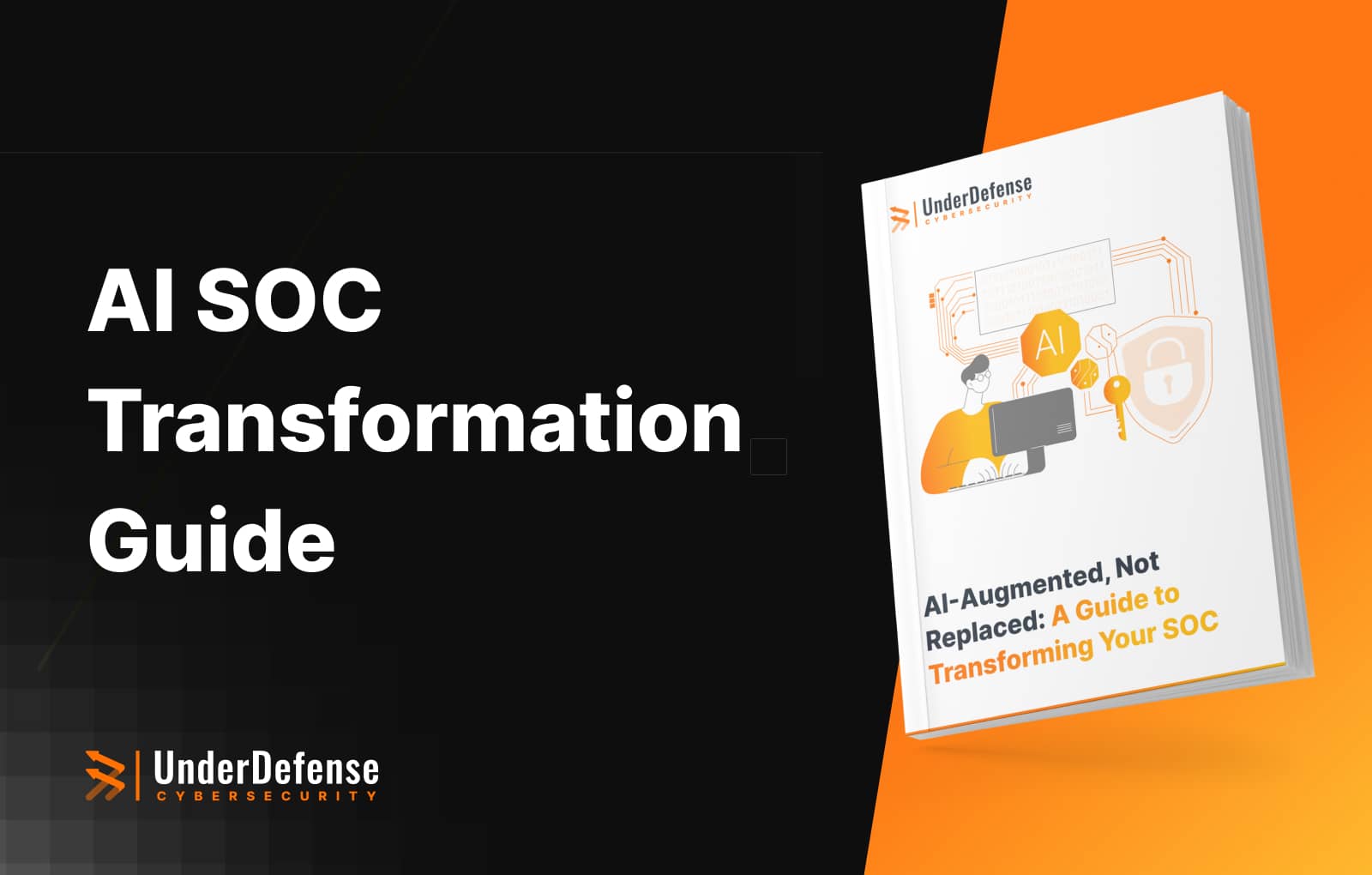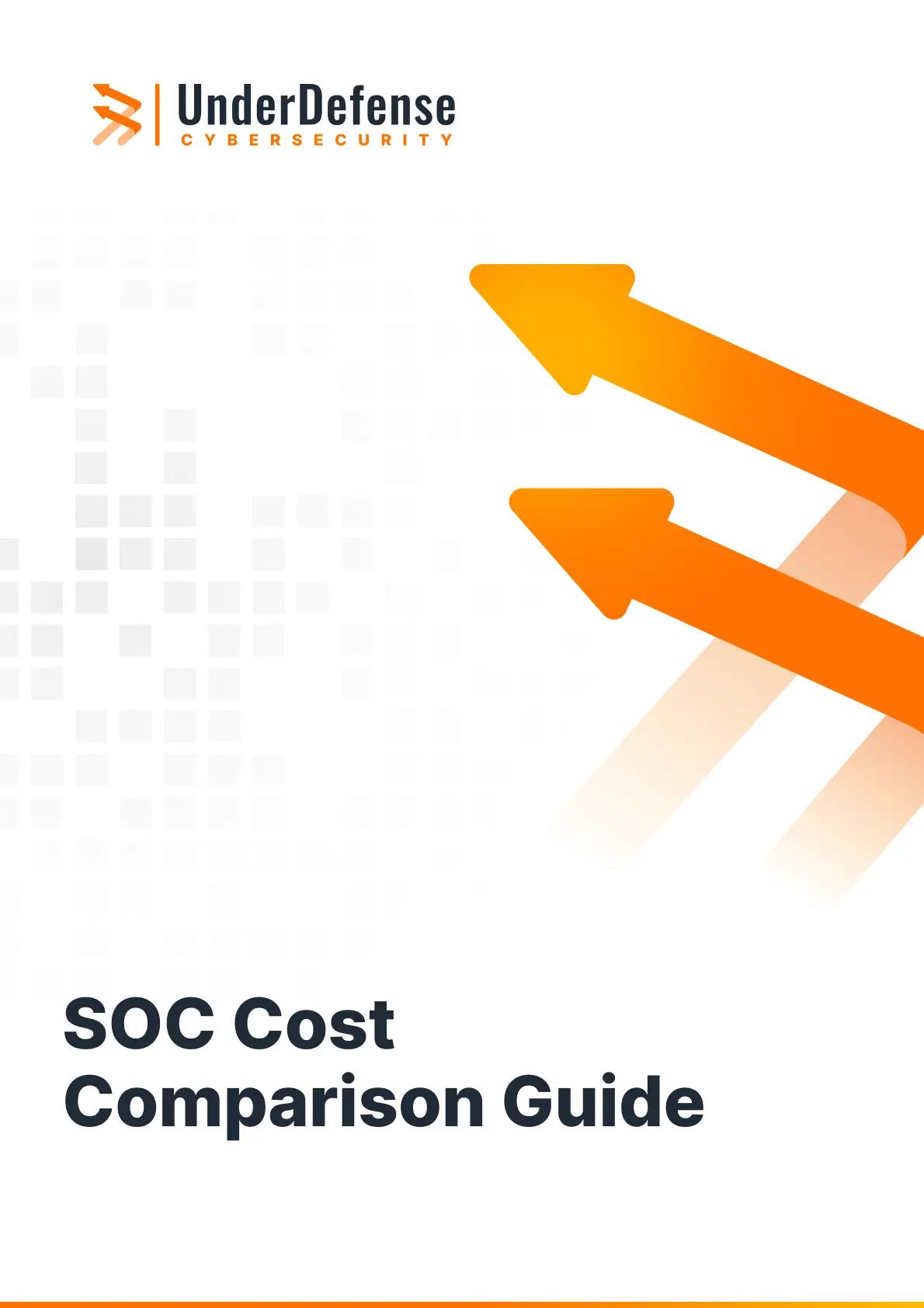What AI can do for your team.

Security teams have too much false positive noise on their plates, with repetitive triage and outdated processes as a cherry on top. The traditional SOC model can’t scale with the pace required by modern cybersecurity demands. If that wasn’t enough, cyber attackers use AI to make their moves smarter and faster. So, where does that leave your team?
In this article, we’ll get straight to the answers on how AI SOC reshapes security, how it affects SOC analysts, and what pitfalls might impede the improvement of your security posture.
Key Takeaways
- How AI is already powering modern cyber attacks.
- What operations AI can automate and improve your workflows.
- Why human analysts still matter.
- Challenges of AI adoption.
Let AI Be Your New SOC Ally
Discover how to integrate AI into your security operations with best practices from our experts.

What Has Gone Wrong with the Traditional SOC Model?
The traditional SOC model cannot handle the workload cybersecurity puts on the specialists today. Tier 1 analysts are overwhelmed with high volumes of alerts, sweeping away false positives. Instead of focusing on real threats, they need to triage the noise. Real threats escalate at a snail’s pace. By the time Tier 2 and Tier 3 specialists finally get around to it, businesses may already face financial and reputational losses.
Attackers are now armed with AI too, which lets them move faster than your SOC team can respond. The SOC model became reactive instead of proactive. To keep pace, your team needs smarter automation and efficient collaboration with AI.
AI-Powered Cyber Attacks
While many SOC teams are still thinking about whether they need to integrate AI into their workflows, attackers are already using it to make faster and smarter moves.
AI trained for social engineering
As part of AI cyber attacks, criminals build believable personas and convincingly write scripts based on specific psychological profiles. Social engineering is now an automated process grounded in human weaknesses. The lack of AI-powered security shields and awareness in your team leaves a major gap through which attackers can enter.
Scripted phishing attacks
Hackers using AI can make phishing attacks more personalized by mimicking internal communication styles and simulating casual dialogues while talking like humans. Some use AI chatbots for real-time conversations. They can pretend to be customer support agents to lure people into sharing personal information, passwords, access, and other credentials.
Deepfakes
You’ve trained your team to recognize social engineering attacks and suspicious links, but what if AI could impersonate a company’s CEO, CTO, or security manager? Deepfakes collect person-specific information from social media, websites, and other sources to create a believable clone, including voice, appearance, and communication style. Next, AI can call the target and request to grant private access or transfer finances because it’s an emergency.
Adversarial AI/ML
Cyberattackers can also target existing AI tools within the software to disrupt algorithm decisions and provide your team with distorted information. They can poison training data or target input data to lead your algorithms astray. Poisoning attacks integrate fake pieces into the algorithm’s training data to undermine its accuracy. With evasion attacks, the criminals manipulate the input data so it bypasses the filters without triggering the alerts and affects the AI’s predictive capacity. Malicious GPTs generate disinformation and provide wrong answers to user questions.
AI-ed ransomware
The adversarial algorithms can search for valuable files and system vulnerabilities to encrypt your data while avoiding detection. AI cyber threats rely on different tactics during the attack, like modifying malware in real time, evading traditional antivirus tools, and encrypting your backup files to ensure the company is cornered.
Use our guide to augment your SOC team by applying AI for your security advantage.

Can AI Prevent Attacks on Its Own?
AI can’t prevent all cyber attacks without human help, but it can get SOC specialists several steps ahead of numerous incidents. The algorithms aren’t a fortune teller; however, they can accelerate your team’s ability to detect and contain threats before any serious consequences for the business. This is your early warning system that supports people through the capacity for vast data analysis and quick anomaly detection. AI in SOC won’t understand the nuanced context of your business environment, but it can surface the threats and allow your team to do their job better and faster.
Will AI Replace SOC teams?
No, AI won’t replace SOC analysts; it will amplify their expertise. You can feed the model with the data from the most advanced knowledge base, but anything undocumented or based on human sensitivity to subtle patterns will go unnoticed by AI. Some decisions require instinct and an understanding of network-specific features that no algorithm can reproduce. The real problem isn’t AI taking over, it’s the company’s certainty that it can. The almighty AI is science fiction, and organizations need to use algorithms as force augmentation that will help analysts make faster decisions.
Want to Know What You’re Paying for?
Use this SOCaaS pricing guide to get smarter with numbers.


What AI Brings to the Table
Take a closer look at how AI can reshape SOC operations by providing smarter insights, accelerating routine work, and helping your team prevent attacks.
1. Smarter malware and phishing detection
In the same way that sports training makes your muscles more resilient to stress, AI training makes the algorithms more resilient to malware and phishing attacks. Especially if you use data based on your experience and teach the model how modern threats bypass traditional security filters. SOC AI will help your team break the chains of outdated attack patterns, which are changing faster than they blink.
2. Automated incident response
Giving AI some autonomy will help you manage staffing gaps since there are ways to reduce human intervention. Provide the algorithms with response playbooks where they can rely on approved instructions and deal with false positives, escalations, and even minimal responses. With AI in cybersecurity, you will avoid downtime and minimize the risks when your team is busy building strategy or handling complex security issues.
3. AI-augmented vulnerability and patch management
Continuous monitoring is one of the key examples of AI in security. The algorithms scan for vulnerabilities in real time, identify the risk context, and set the priorities for your team. Also, you can even achieve more proactivity in patch management: the algorithms can track release cycles, find system gaps, and apply available patches right away.
4. Improved endpoint security
AI can also help you monitor your endpoint devices, no matter the number. The algorithms analyze endpoint activity and spot suspicious behaviors, like DLL injection or unauthorized data exporting. AI SOC will intercept the intrusion even at night, when your team can’t react, and contain the threat until further investigation.
5. Network traffic monitoring
AI can check network traffic and detect anomalous patterns like exfiltration attempts or command-and-control callbacks. The algorithms can learn from “normal” network traffic flow typical to your environment and quickly point out any deviations. With AI SOC automation, you will be more in touch with your current network condition and avoid threats slipping past your security team.
6. Real-time fraud detection
Data works in patterns, and what’s better than AI to analyze the sequences in user behavior or transactions to identify anomalies and signal about potential threats? Some of the most effective examples of AI in cybersecurity include detecting fraud attempts and searching for ways intruders might sneak into the system. The algorithms can adapt to changes in the attacker’s approaches.
7. IoT device monitoring
The security of IoT devices is no less important than your servers as these devices constantly communicate and transmit data to one another. AI can manage the monitoring of vast device fleets, detecting unusual activities in firmware or anomalous traffic. You can set necessary security parameters and let security operations automation check device functionality 24/7.
8. AI-backed penetration testing
Pen testing provides valuable insights into your security posture, but your team can’t regularly run it. That’s where one of the SOC automation use cases can come in handy — using AI to generate attack simulations and uncover misconfigurations or vulnerable assets. This will maintain your team’s awareness of weak spots, which helps focus on preventing attacks rather than reacting to them.


AI-backed penetration testing
Pitfalls in AI Adoption
Implementing new tools always brings issues, and AI is no exception. See what SOC teams usually face while getting in with AI security.
Weak integration conditions
Many business environments run on legacy systems that can’t support modern tools. Rigid architectures and systems that lack APIs won’t handle real-time data processing or AI-based automation. Before full-scale integration, you might need to reformat old data to prepare it for AI-driven SOC automation, retrofit tools, and eliminate processing bottlenecks. Poor integration quality will lead to false algorithm outputs that compromise your security instead of strengthening it.
Training skill gaps
Your team won’t use AI tools effectively right away — they require training. Many of them should learn how to interpret data and create workflows with algorithms included, especially when it comes to AI and security.
According to Microsoft research, only 1% of untrained employees engage with AI daily; others prefer to rely on their tried-and-true methods, which are often outdated. However, it’s all starting to change when businesses invest in a team’s AI literacy:
- 90% report faster decision-making
- 81% notice revenue growth
- 81% mention increased employee retention
Companies often don’t know when the team requires support and education, and with AI challenges shuffling the deck every day, the sooner your employees get trained, the better.
Privacy and compliance risks
Many believe that AI has a human capacity for critical thinking, and don’t check the training data they feed into the models. However, if your historical data is biased or incomplete, so will be the outputs your model provides.
Another concern — automated SOC needs your confidential data, like endpoint activity, notes, and ticket details, to run efficiently, which means exposing the business to potential privacy and compliance risks. If your team doesn’t work on access controls and storage security, AI may become a cause of the breach.
Blind trust in AI autonomy
Modern AI algorithms operate as black boxes — sometimes, developers can’t explain the logic behind specific outputs. This can turn into a slippery slope, and here are the mistakes your team might make:
- Accept automated decisions without hesitation;
- Miss biases and blind spots;
- Ignore compliance risks.
Autonomy for AI doesn’t mean you shouldn’t stay in control. Before relying on the algorithms, you need to have clarity about their decision logic, hidden bias, and regulatory demands. Questions like “Will cybersecurity be replaced by AI?” highlight the importance of human oversight, as AI needs feedback from security professionals as well as providing explanations for why it came to certain conclusions.
What’s the Long-Term Value of Using AI?
In the long run, AI-driven security will become your strategic advantage as the algorithms act as your team’s co-pilot that triages priority-one alerts, filters out false positives, and boosts investigation. As a result, you’ll have headcount optimization and cost reduction as the algorithms will help you avoid ransomware attacks and escalated incidents that take too many resources to downscale. AI will reshape your workflows and take over surface-level tasks to switch your team’s attention to high-priority work. AI allows you to do more with less and stay ahead of cybercriminals, which is one of the key AI benefits in modern security.
Let’s boost your SOC performance
Reduce the burden of tiresome alerts with SOC co-pilot and human-driven MDR.
The Bottom Line
The real risk isn’t AI, but failing to use it while attackers thrive on algorithms. By combining your team’s expertise with AI, you will create a multiplied force that reduces response times, alert fatigue, and incidents leading to financial losses. You don’t need to increase the headcount to get more effective — that’s how AI can be used in cyber security. The algorithms can support people with large data volumes in analysis and uncovering subtle anomalies. However, strategy and business context are your team’s responsibility since AI cannot handle such tasks. Don’t be afraid of AI taking over; you can learn how to lead with it.
1. How will AI affect cybersecurity jobs?
AI will redefine the roles of cybersecurity professionals without replacing them. The algorithms increase operation speed and minimize routine work. However, they still need human intervention for strategic oversight and AI governance.
2. What is the role of AI in cyber security?
AI is a co-pilot whose responsibilities stretch from flagging threats to searching for alert context and priority. The algorithms can handle massive data sets, which are impossible to grasp by the human brain. AI quickly finds hidden patterns and provides the necessary information to the security team.
3. What is the main AI use case in cyber security?
The most frequent use of AI in cyber security is for advanced threat detection and prevention. The algorithms analyze network traffic 24/7, spot subtle anomalies quickly, and escalate the issue before the damage occurs.
4. What are the benefits of AI in cyber security?
AI can enhance cybersecurity by providing smarter malware and phishing detection, automated incident response, and a variety of AI use cases in cyber security, such as AI-augmented vulnerability and patch management, improved endpoint security, continuous network monitoring, real-time fraud detection, IoT device monitoring, and AI-backed penetration testing.



